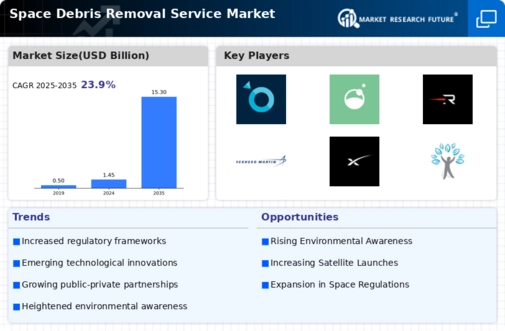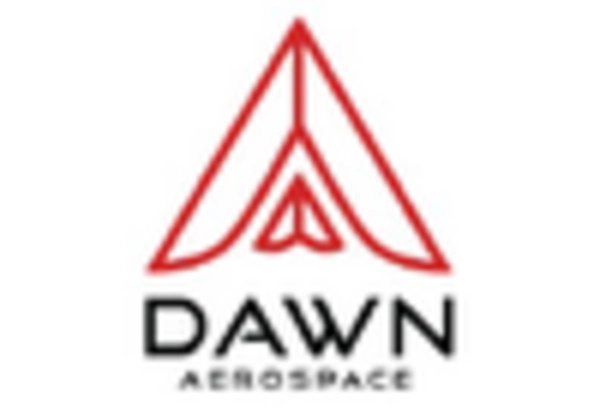Increasing Satellite Launches
The rise in satellite launches has been a pivotal driver for the Space Debris Removal Service Market. With the increasing number of satellites being deployed for various purposes, including communication, Earth observation, and scientific research, the risk of space debris has escalated. According to recent estimates, there are over 3,000 active satellites orbiting Earth, and this number is projected to grow significantly in the coming years. As more satellites are launched, the potential for collisions increases, thereby necessitating effective debris removal solutions. The Space Debris Removal Service Market is likely to see heightened demand as stakeholders recognize the importance of maintaining a sustainable orbital environment. This trend suggests that companies specializing in debris removal will play a crucial role in ensuring the safety and longevity of space operations.
Regulatory Pressures and Guidelines
Regulatory pressures and the establishment of guidelines for space operations are emerging as critical drivers for the Space Debris Removal Service Market. Various international organizations and national space agencies are formulating policies aimed at minimizing space debris and ensuring responsible behavior in orbit. For instance, the United Nations Office for Outer Space Affairs has been advocating for the adoption of best practices in space debris mitigation. These regulations are likely to compel satellite operators and space agencies to invest in debris removal services to comply with legal requirements. As these guidelines become more stringent, the Space Debris Removal Service Market is expected to experience increased demand for innovative solutions that align with regulatory frameworks, thereby enhancing the overall safety of space operations.
Increased Investment from Private Sector
The influx of investment from the private sector is emerging as a vital driver for the Space Debris Removal Service Market. Venture capitalists and private companies are increasingly recognizing the commercial potential of debris removal services, leading to a surge in funding for startups and established firms in this domain. Reports suggest that investments in space-related ventures have reached unprecedented levels, with a significant portion directed towards debris removal technologies. This financial backing is likely to accelerate the development and deployment of innovative solutions, thereby enhancing the capabilities of the Space Debris Removal Service Market. As private entities continue to enter the market, competition is expected to intensify, potentially leading to more effective and cost-efficient debris removal services.
Growing Awareness of Space Sustainability
There is a burgeoning awareness regarding the sustainability of space activities, which serves as a significant driver for the Space Debris Removal Service Market. As the number of space missions increases, concerns about the long-term viability of Earth's orbital environment have come to the forefront. Stakeholders, including governments and private entities, are increasingly recognizing the need to mitigate space debris to protect existing and future missions. Reports indicate that the economic impact of space debris could reach billions of dollars if not addressed. This awareness is prompting investments in debris removal technologies and services, thereby fostering growth in the Space Debris Removal Service Market. The emphasis on sustainability is likely to shape future policies and funding, further driving the demand for effective debris management solutions.
Technological Advancements in Debris Removal
Technological advancements in debris removal techniques are significantly influencing the Space Debris Removal Service Market. Innovations such as robotic arms, nets, and laser systems are being developed to capture and deorbit space debris effectively. These technologies not only enhance the efficiency of debris removal operations but also reduce costs associated with traditional methods. The market is witnessing investments in research and development to create more effective and sustainable solutions for debris management. As these technologies mature, they are likely to attract interest from both governmental and commercial entities, thereby expanding the Space Debris Removal Service Market. The integration of advanced technologies could potentially revolutionize how space debris is managed, leading to safer and more sustainable space exploration.

















Leave a Comment